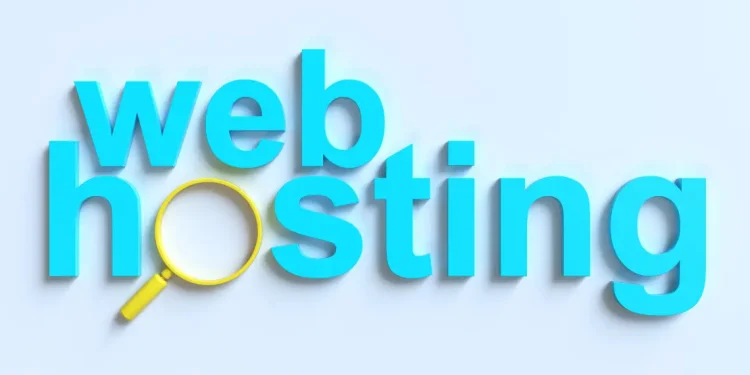Before hosting my site on a VPS, I was using shared hosting. Over time, I discovered that I couldn’t do many things in my shared hosting, such as installing object cache and other similar tasks.
I realize moving on to dedicated servers is expensive and unnecessary for small and personal websites. Then I found VPS and decided to move on, which offers a balance between shared hosting and dedicated servers.
What comes with a VPS? In a nutshell, a VPS is a partitioned portion of a physical server with its own operating system, storage, and bandwidth, providing you with greater control and flexibility than shared hosting.
This makes a VPS an attractive option for hosting multiple websites, especially for small businesses and developers.
The goal of this blog post is to share experiences and talk about the pros and cons of running multiple sites on a single VPS, as well as the security measures that must be taken.
Table of Contents
What Is a VPS?
A VPS (Virtual Private Server) is a hosting solution where a physical server is divided into multiple isolated environments using virtualization technology. Each environment, or virtual server, acts like its own dedicated machine, with guaranteed resources and independent control.
When you rent a VPS, you essentially get:
- Your own operating system (OS) – Linux, Windows, or another OS, depending on your hosting provider.
- Dedicated resources – A fixed amount of RAM, CPU cores, and disk space that no other customer can use.
- Private bandwidth allocation – Unlike shared hosting, you won’t compete with hundreds of sites for traffic handling.
This setup makes a VPS more powerful and customizable than shared hosting, but far more affordable than a dedicated server.
👉 In simple terms:
- Shared hosting = Living in an apartment with many roommates.
- VPS hosting = Living in a private condo inside a larger building.
- Dedicated hosting = Owning your own house with no one else inside.
VPS vs Shared vs Dedicated Hosting
If you’re still deciding which hosting option is right for you, here’s a breakdown of how VPS compares against shared and dedicated hosting:
| Feature | Shared Hosting | VPS Hosting | Dedicated Hosting |
|---|---|---|---|
| Cost | Low – Cheapest option, usually $2–10/month. | Moderate – Typically $10–50/month depending on resources. | High – Starts around $80–150/month and up. |
| Control | Limited – No root access; restricted to what the host allows. | Root Access – Install custom software, tweak configs, manage security. | Full Root – Complete control of the entire physical machine. |
| Performance | Unpredictable – A traffic spike on another site may slow yours. | Stable – Dedicated resources keep performance consistent. | Best – All server power is dedicated to your sites. |
| Scalability | Poor – Hard to scale beyond basic plans. | Good – Easily upgrade RAM, CPU, and storage. | Excellent – Can scale up significantly, but expensive. |
| Security | Lowest – Higher risk since you share the server with hundreds of unknown sites. | Medium–High – Stronger isolation and control of your environment. | Highest – Maximum protection since you’re the only tenant. |
Key Takeaway
- Shared hosting is best for hobby sites and beginners with very low traffic.
- VPS hosting is the sweet spot for small businesses, developers, and anyone running multiple websites who want control without breaking the bank.
- Dedicated hosting is overkill unless you’re handling very high traffic (e.g., large e-commerce, SaaS, or enterprise platforms).
Why I Chose VPS Instead of Shared Hosting
When I launched my first website, shared hosting was more than enough. It was cheap, easy to set up, and perfect for learning the basics. But as I started adding more projects and client sites, the limitations quickly became clear.
Here are the main problems I faced:
Performance Drops
On shared hosting, hundreds of websites run on the same server. If one of those sites gets a traffic spike or runs poorly optimized scripts, everyone else suffers. I noticed my sites would randomly slow down or even crash, even though I wasn’t getting much traffic.
Lack of Flexibility
Shared hosting locks you into the host’s predefined setup. I couldn’t install advanced tools like object caching (Redis/Memcached) or configure PHP settings freely. For a developer or anyone managing multiple projects, this becomes very restrictive.
Cost of Scaling
Each time I wanted to launch a new site, I needed to buy another shared hosting package. This quickly added up. A VPS, on the other hand, allowed me to host all my websites under one plan, which turned out to be far more cost-effective.
Switching to a VPS solved all of these problems. I now run multiple sites – from blogs to small e-commerce stores – on a single server without needing separate accounts.
Risks of Hosting Multiple Websites on a VPS
While VPS hosting comes with clear advantages, there are also challenges you need to be prepared for:
1. Resource Sharing
Even though a VPS guarantees a portion of resources, all your websites still share the same CPU, RAM, and storage pool. This means:
- If one website suddenly gets a traffic surge, it may consume more memory and CPU, slowing down the others.
- A poorly coded plugin or script on one site could hog server resources.
Example: If your WooCommerce shop has a flash sale and traffic jumps, your personal blog on the same VPS may load more slowly.
2. Security Risks
Hosting multiple websites on one VPS also increases your attack surface.
- If one site is hacked (e.g., an outdated WordPress plugin), an attacker could use that entry point to explore or compromise other sites on the server.
- Poor isolation between sites amplifies the risk, especially if all sites share the same user account or file structure.
Example: A hacked WordPress blog with a weak password could give access to the same directories as your e-commerce site, putting sensitive customer data at risk.
How to Secure Multiple Sites on a VPS
If you’re managing several websites on one VPS, security must be your #1 priority. The good news is that with the right setup, you can greatly reduce risks. Here’s what I recommend:
1 – Regular Updates
- Keep your server operating system (Ubuntu, Debian, CentOS, etc.) updated.
- Apply security patches as soon as they are released.
- Update your CMS (WordPress, Joomla, etc.), themes, and plugins regularly.
👉 Outdated software is the #1 reason sites get hacked.
2 – Separate User Accounts
- Create different Linux users or containers for each site.
- This way, even if one site is compromised, attackers can’t easily access others.
- For higher isolation, you can even use Docker containers or cPanel accounts per site.
3 – Server Hardening
Harden your VPS against common attacks by:
- Enabling a firewall (UFW, CSF, or iptables).
- Disabling unused ports and unnecessary services.
- Using SSH keys instead of password logins.
- Keeping your software stack minimal – only install what you truly need.
4 – Security Plugins (for WordPress Sites)
If you’re hosting WordPress websites, security plugins can add an extra layer of protection:
- Wordfence – Blocks brute-force login attempts and malware.
- iThemes Security – Helps enforce strong passwords, 2FA, and login lockdowns.
- Sucuri – Offers a firewall and malware scanning.
5 – Regular Backups
No matter how secure your VPS is, always prepare for the worst:
- Set up automated daily backups.
- Store them offsite (Amazon S3, Google Drive, or a separate VPS).
- Keep multiple versions – in case a backup is also compromised.
👉 A backup is your safety net. One click should restore your site if things go wrong.
6 – Monitoring & Alerts
Proactive monitoring helps catch problems before they escalate:
- Use Fail2Ban to automatically block suspicious login attempts.
- Install ModSecurity or CrowdSec
for a web application firewall (WAF). - Set up uptime monitors (Pingdom, UptimeRobot) to alert you if a site goes down.
- Use
htop,top, or hosting panel dashboards to keep an eye on resource usage.
SEO Considerations for Multiple Sites on a VPS
One common concern website owners have is:
“Will hosting multiple sites on the same VPS or IP address hurt my SEO rankings?”
The short answer is: No, not directly.
Google has repeatedly confirmed that sharing an IP address does not negatively impact rankings, as long as the hosted sites are legitimate. What matters is the quality of the sites and server reliability, not whether they share an IP.
That said, there are still some critical SEO-related factors to consider when running multiple websites on a VPS:
1 – Keep Load Times Fast
- Website speed is a direct ranking factor in Google’s algorithm.
- If your VPS is overcrowded with too many websites or poorly optimized applications, your sites may slow down.
- Use server monitoring tools like
htop,glances, or your hosting dashboard to track CPU and memory usage.
👉 Tip: For site speed, also optimize your websites with caching (LiteSpeed Cache, WP Rocket) and a CDN (Cloudflare, QUIC.cloud).
2 – Ensure High Uptime
- Frequent downtime damages both SEO rankings and user trust.
- Choose a VPS provider with at least a 99.9% SLA (Service Level Agreement).
- Use monitoring tools like UptimeRobot or Pingdom to get alerts if a site goes down.
3 – Secure All Sites
- Google may penalize or even deindex websites that are hacked or spreading malware.
- Since one compromised site could expose others on the same VPS, strong security practices are essential.
- Implement firewalls, regular updates, and malware scanners.
4 – Use SSL (HTTPS)
- Google gives ranking preference to HTTPS-enabled websites.
- Let’s Encrypt offers free SSL certificates, which can be installed for all sites on your VPS.
- Aside from SEO, HTTPS builds trust with visitors, especially for e-commerce sites.
Bonus Tip: Monitor Performance Regularly
- Use GTmetrix, PageSpeed Insights, or WebPageTest to analyze load times.
- Track Core Web Vitals, since Google uses them as ranking signals.
- If resource usage increases, scale up your VPS instead of risking slow performance across all sites.
👉 Bottom line: A VPS won’t hurt your SEO if managed well. Just keep performance, uptime, and security in check.
My Experience: Running Multiple Sites on a VPS
Currently, I run several WordPress and PHP-based websites on a single VPS with the following specs:
- 4 CPU cores
- 8 GB RAM
- 120 GB SSD (RAID 10)
- Nginx + Apache + LiteSpeed Addon
- Object caching enabled with Memcached
This setup has been more than enough for:
- A couple of blogs with moderate traffic
- A portfolio site
- An e-commerce store with occasional traffic spikes
Performance Insights:
- Even when my e-commerce site receives a surge in traffic (e.g., during promotions), the other sites remain stable.
- The key has been resource monitoring (using
htopand uptime tools) and applying security hardening from the start. - Whenever I notice CPU or memory usage approaching the limit, I simply scale up my VPS plan instead of buying separate hosting accounts.
👉 Compared to paying for 3–4 separate shared hosting plans, the VPS is faster, cheaper, and more manageable.
Wrapping Up: Is VPS Right for You?
Hosting multiple websites on a single VPS can be a powerful and cost-effective solution – but it’s not for everyone.
✅ Advantages
- Cost-effective – One VPS can host multiple websites without paying for separate accounts.
- Flexible – Full control over server setup, configurations, and installed software.
- Scalable – Easily upgrade RAM, CPU, or storage when traffic grows.
⚠️ Challenges
- Security responsibilities – Unlike shared hosting, you are in charge of firewalls, patches, and backups.
- Resource management – One resource-hungry site can slow down the rest if not monitored.
Final Thoughts
If you’re:
- A developer managing client projects,
- A small business running multiple websites, or
- A blogger expanding into different niches,
…then a VPS can give you the perfect mix of affordability, control, and performance.
But remember – with great power comes great responsibility. If you’re ready to take on server management and security, a VPS can be one of the best investments you’ll make for your online presence.
🚀 Before You Go:
- 👏 Found this guide helpful? Give it a like!
- 💬 Got thoughts? Share your insights!
- 📤 Know someone who needs this? Share the post!
- 🌟 Your support keeps us going!
💻 Level up with the latest tech trends, tutorials, and tips - Straight to your inbox – no fluff, just value!











